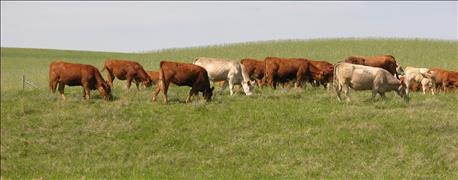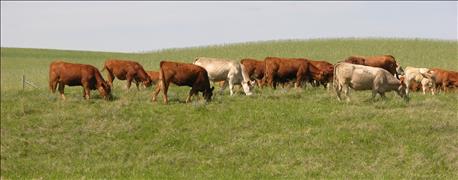
A new report from Rabobank says farmland rent values must drop to meet lower commodity prices and it's highly probably all land values will fall, too.
"If rental costs remain sticky at unsustainable levels through the 2017-18 growing period, individual land assets face the threat of much deeper devaluation, as nutrient and crop protection programs are cut and abandonment (usage changes) increases," says Sterling Liddell, Rabobank Food & Agribusiness Research and Advisory service analyst.
The research arm of the international bank says using its baseline price projections of corn below $4 per bushel, soybeans below $10.20 per bushel, and wheat prices falling in the $4-5 per-bushel range, rental rates need to decline from an expected $1.60 per expected bushel of corn produced to around $1.30/bushel. This is if the costs of seed, crop protection and fertilizer remain relatively flat.

An almost-certain decline in row-crop ground is in the wings, says an international agribusiness consulting firm. Pasture land could drop in concert.
Generally this means a $30/acre to $50/acre decrease. Such a move would push returns from farming back to near breakeven, if expected production equals trend-line yields.
Even with a decline in rental values, farmland acreage contraction will still likely be needed before commodity prices reach a sustainable level in the long term, Rabobank analysts say. This should mean a return to grass and forage crops.
To balance supply and demand at a sustainable breakeven price, Rabobank analysts estimate that 3-5 million acres will be forced out of corn, soybean and wheat production over the next three years. This is about a 2% decline from the five-year average of total farmland.
They explained that soybean stocks could increase somewhat before becoming burdensome, and predicted acreage shift toward soybeans next year, a move already noted in the new Farm Futures planting intentions survey just out Sept. 1. If this happens, and absent a drought, international stocks of all the major grains will continue to increase, pressuring prices further downward.
The result of acres being forced out of row crop production will be additional downward
pressure on the overall value of agricultural land, Liddell wrote. This suggests more acres for beef production and lower pasture/forage values at a time the expansion of beef production is very likely to be slowing. That could add to down pressure on pasture prices and rental values.
Analysts also said external investment money previously flowing into agricultural land should decline. In 2016, the returns from agricultural land investment have fallen to equal the yields from long-term government bonds.
"Consequently, the incentive for investment in agricultural land by institutional organizations is expected to decline, unless returns once again strengthen relative to alternatives," Liddell wrote. "This can happen as a result of increased commodity prices or a decline in land values below long-term fundamental indicators (i.e. a return to land from production activity)."
With all that said, the analysts said three factors could affect timing and severity of these expected changes.
Weather volatility is the first issue. Good growing weather this year and potentially large yields suggest even deeper losses than previously expected. Swings between wetter and drier years will carry yields up and down, of course, and prices with them.
"However, we believe the long-term outcome will be the same, with drought extending the declines by one to two years and large yields driving the declines to occur sooner," the analysts wrote.
Rising interest rates is the second mitigating issue.
"Interest rate increases remain the most significant threat to land values," they wrote. "Substantial interest rate increases would drive mortgage payments higher and require values to decline more, in order to remain in balance with farming economics."
Increasing age of farmers is the third factor the Rabobank analysts described.
"As more farmers reach retirement age ... the prospect of declining net worth and decreased annual income from rental payments is expected to be an incentive to sell land," analysts explained. "An increase in the supply of row crop land for sale is likely to have a negative impact on values."
They added the emotional attachment to land makes forecasting this impact difficult, but said it could be a factor nonetheless.
About the Author(s)
You May Also Like




